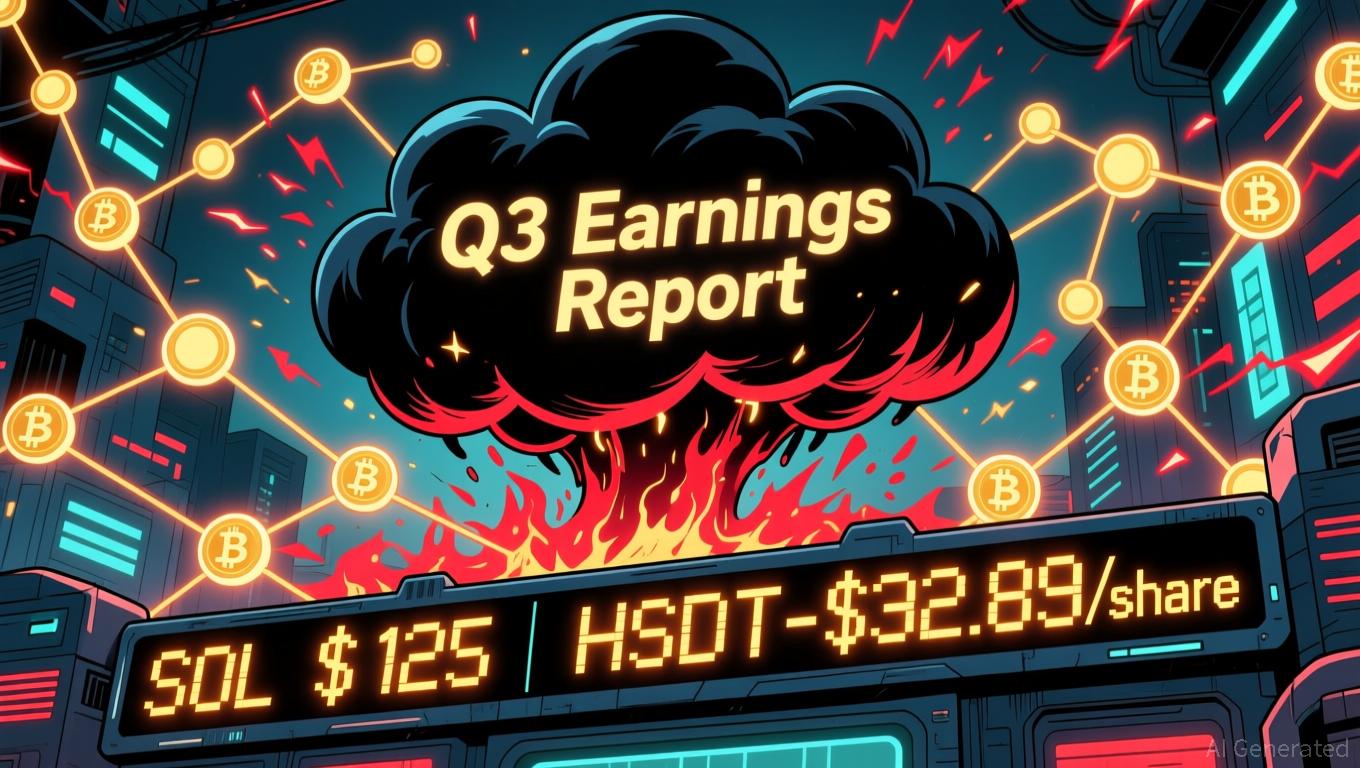Policy Showdown: Yen’s Decline Challenges Japan’s Economic Unity
- Japan's yen plunges to 10-month lows as dovish BoJ policies and fiscal stimulus clash with U.S. rate differentials. - Governor Ueda emphasizes data-driven decisions while Finance Minister Katayama warns of "disorderly" market intervention risks. - 21.3-trillion-yen stimulus package raises inflation to 3.0%, deepening policy tensions between fiscal expansion and monetary restraint. - Fed's delayed rate cuts and geopolitical factors like China's tourism decline compound yen's vulnerability to speculative s
The Japanese yen has dropped to precarious lows, fueling intense speculation over whether the Bank of Japan (BoJ) or the Ministry of Finance will step in to halt its slide. As the USD/JPY pair challenges the 158.00 resistance, dovish policy stances and persistent inflation have intensified
BoJ Governor Kazuo Ueda has reiterated that policy moves will

The government’s aggressive fiscal stance has come under the microscope,
The yen’s rapid fall has led Japanese authorities to issue verbal warnings. Katayama made it clear that
Traders are watching closely for any signs of official intervention,
The U.S. dollar’s resilience, supported by fading hopes for Federal Reserve rate cuts, has added to the yen’s troubles.
At the same time, geopolitical strains—such as China’s reduction in tourism to Japan after Takaichi’s remarks on Taiwan—have further weighed on the yen by reducing export demand. These developments highlight the complex relationship between domestic policy decisions and external shocks, making the BoJ’s pursuit of stable inflation and currency values even more challenging.
With USD/JPY nearing key technical thresholds, the BoJ and Japanese government are facing a crucial test of their ability to coordinate policy. While verbal interventions have offered short-term relief, lasting stability for the yen may require decisive steps—whether through rate increases, fiscal adjustments, or direct market action. Investors remain cautious, as the outcome will likely influence not only Japan’s economic direction but also the broader global currency landscape.
Disclaimer: The content of this article solely reflects the author's opinion and does not represent the platform in any capacity. This article is not intended to serve as a reference for making investment decisions.
You may also like
Bitcoin Updates: Federal Reserve's Mixed Signals Spark Bitcoin's Surge Back to $85K
Why Did Memecoins Collapse in 2025? The Shift Toward Utility-Based Cryptocurrencies
- The memecoin market plummeted in November 2025, with top tokens like SPX and DOGE losing over 14% amid a broader crypto slump. - Total crypto market cap dropped to $2.96 trillion, as investors shifted to utility-driven tokens like DeFi projects. - Analysts attribute the crash to macroeconomic sensitivity and retail-driven hype, with Bitcoin and Ethereum also falling 14-16%. - Despite the downturn, cautious optimism remains for a rebound if market conditions stabilize or new trends emerge.

Bitcoin News Update: "2025 Downturn Triggers Crypto Outflow: Savvy Investors Focus on Practical Use, Move Away from Hype"
- Bitcoin fell below its 50-week moving average on Nov 21, 2025, confirming a bear market with a 23% monthly loss and $2B in liquidations. - Crypto market cap dropped below $2.8T in 24 hours as Bitcoin ETFs saw $903M outflows and open interest fell 35% from October peaks. - Institutional investors shifted toward utility-driven projects like Digitap ($TAP), which raised $2M via presale with 124% APR staking rewards. - Digitap's hybrid crypto-fiat model combines blockchain with SWIFT/SEPA, targeting $250T pa

Solana News Update: Institutions Invest $2 Billion in Solana ETFs While GeeFi Presale Marks a New Era for Altcoins
- Solana (SOL) dropped 30% to $125 in late 2025 amid market volatility and a $352.8M Q3 net loss despite revenue growth. - Six new U.S. Solana ETFs drove $26.2M in inflows on Nov 18, with total assets exceeding $2B, reflecting institutional confidence in its infrastructure. - GeeFi (GEE) emerged as an altcoin contender, selling 50% of its Phase One tokens in 24 hours, leveraging Avalanche's 99.9% fee cuts and staking rewards. - Analysts highlight Solana's bearish technical indicators but note ETF inflows c
